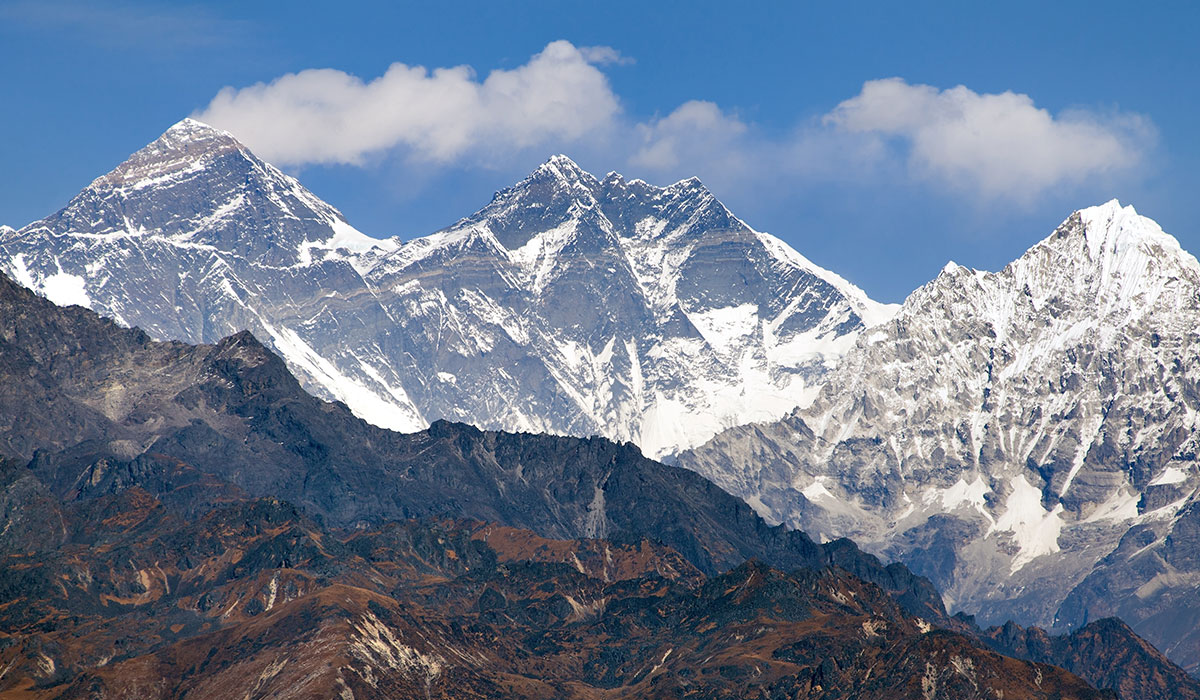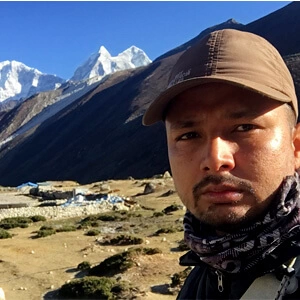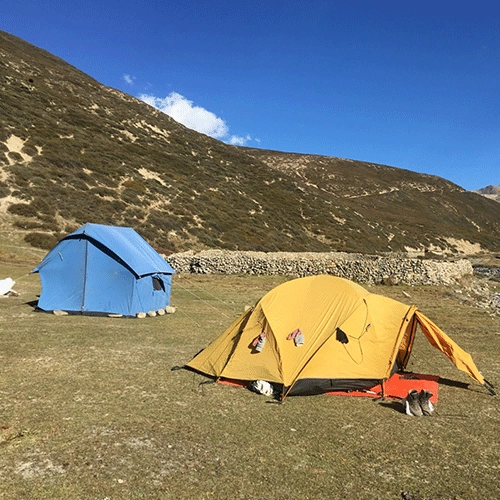Best Time For Pikey Peak Trek: Overview and Highlights in Different Seasons
Pikey Peak Trek is considered one of the easiest and short trekking adventures in the Nepali Himalayas. This exciting Himalayan journey explores the lower regions of the mainstream trekking destination in the country, Khumbu. The elevation gain in this trek is not that high, and the highest point of the trek is Pikey Peak which is at an elevation of 4,065 meters (13,336 feet) from the sea level. As the maximum elevation point of this journey barely touches the alpine zone (above 4,000 meters), the adventure experience is pretty much consistent throughout the year.
However, even if the trekking experience is enjoyable throughout the year, it doesn’t mean that the highlights of this trek are pretty much the same all year round. Different seasons bring out different aspects of this Himalayan journey, and each seasons are packed with their own unique charms. Let’s discuss the best time for Pikey Peak Trek and what your journey will unfold in these seasons.
Pikey Peak Trek in Spring (March to May)
Spring (March, April, and May) is probably one of the most popular trekking and mountain-climbing periods in the Nepali Himalayas. This peak season for Himalayan endeavors is loved for its favorable climatic conditions, warm temperatures, exhilarating landscapes, and cultural experience. So, in overall, if you are taking on the mountain trails during this top contender season for the best time for Pikey Peak Trek, the unique blend of exciting experiences will make the journey an iconic experience.
Primarily known for its natural wonders, the entire landscape of the country is covered by lush greenery and colorful flowers, as this is the pinnacle point of nature. The mountain trails, which are known for the blooming of the rhododendron flowers, the national flower in this season, also unveil the path to explore the impeccable wilderness, flora, and fauna of the region (Sagarmatha National Park). During your Pikey Peak Trek in spring, you will also have the opportunity to experience beautiful festivals like Maha Shivaratri, Chaitra Dashian, Nepali New Year, Bisket Jatra, Buddha Jayanti, etc.
The temperature of the Pikey Peak region ranges between 10°C to 20°C during the spring season.
Pikey Peak Trek in Spring Highlights
- Best season to admire the true essence of nature
- Stunning landscape covered with colorful flowers
- Ideal climate and warm temperatures even at high altitudes
- High time to explore the flora and fauna of the Himalayas
- Fascinating cultural celebrations with unique festivals
- Clear mountain views under stable climatic conditions
- Incredible photogenic settings
Pikey Peak Trek in Autumn (September to October)
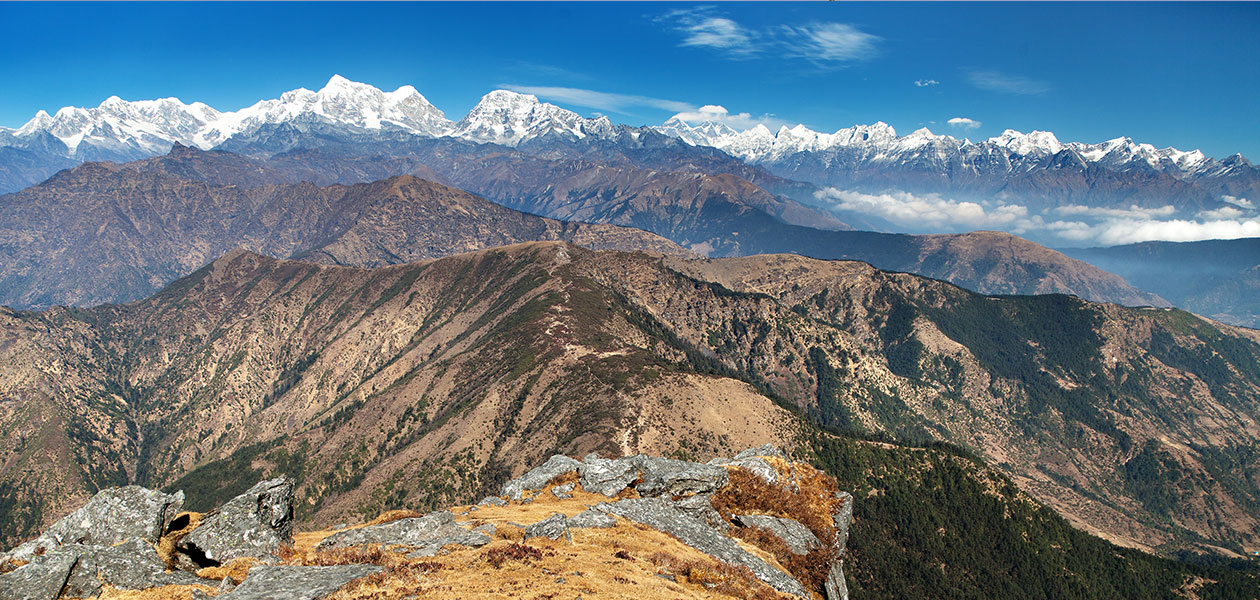
Autumn (September, October, and November) is another top contender in the best time for Pikey Peak Trek category. As the weather conditions are at the most stable period during this season, the trekking trails are most comfortable. That’s one of the reasons why many trekkers refer to the autumn as the number one season for treks in Nepal. The days are also mostly clear, as there are no clouds and fog, so the views of the incredible peaks from the trekking trails will be simply outstanding.
This season also has the most ideal temperatures for outdoor adventures in the country. The temperatures are not too high, like the monsoon that comes along with excessive sweating, nor is it freezing like the winter. It's just on an optimum level, and the fresh morning and evening breezes make the experience refreshing. The temperatures of the Pikey Peak region generally hover around 9°C to 17°C during the autumn season.
Besides the most appropriate circumstances, this festive season in Nepal treats travelers with its grandest celebrations. During the autumn season, this charming Himalayan nation relishes major festivals like Dashain, Tihar, Teej, Pachali Bhairab, Sita Bibaha Panchami, Mani Rimdu, etc.
Pikey Peak Trek in Autumn Highlights
- Crisp mountain air and incredible Himalayan vistas
- Most perfect climatic conditions and temperatures
- Festive atmosphere and celebration of some of the biggest festivals in the country
- Dry and well-maintained trekking route
- Foilage of the fall season, exploration of the Himalayan region in a different color
- Less crowded trail in the high seasons
- Wildlife sightseeing opportunities
Pikey Peak Trek in Monsoon (June to August)
Monsoon (June, July and August) is the peak point of the summer season in this Himalayan country. On the contrary to the best time for Pikey Peak Trek, this season is known as an off-season for trekking adventures in Nepal. Its unfavorable weather condition is the reason why the monsoon season doesn’t receive a lot of trekkers from around the world. The monsoon season sees continuous rainfall, due to which transportation services and trekking trails are mostly affected.
This season also carries the risk of natural calamities like flooding and landslides due to the continuous downpour. So, unlike trekking in the other seasons, trekkers need to have some extra contingency days in case of bad weather. Similarly, the right equipment and gear are important to overcome the slipper trails of this season. However, although Pikey Peak Trek in this season requires extra effort and precaution, the Himalayan journey is simply amicable.
Monsoon season nourishes the landscapes of the country, so you will see greenery everywhere you go. On top of that, the rivulets, waterfalls, and rivers are in their prime during this season and add thrills to your exploration. The sweet aroma of freshness, foggy landscapes, and water-puddle landscapes add a unique experience to your journey in this season. The temperature of the Pikey Peak region can range between 15°C to 25°C during the monsoon season.
Buddha Jayanti, Naag Panchami, Gai Jatra, etc are some of the fascinating celebration in the country during this season.
Pikey Peak Trek in Monsoon Highlights
- Lush and brimming landscapes nourished by monsoon rain
- Misty and cloudy setting, magical experience of like walking over the clouds
- Fresh atmosphere and rainbows
- High flowing river and waterfalls showcasing their pinnacle form
- Fascinating water puddle-strewn landscape
- Less crowd on the trails
- A serene and tranquil experience
Pikey Peak Trek in Winter (December to February)
Winter (December, January, and February) is another low season for trekking in Nepal. This is the coldest season in the mountain the temperatures are freezing on the mountain. Similarly, the landscapes of the mountain region are covered by snow during this season, which makes even simple walking a demanding endeavor. You will also need to carry extra layers and equipment to keep yourself warm during your trek.
But, despite the challenges of the winter, this season takes you to a winter wonderland where you can admire the peak point of the Himalayas. Pikey Peak in winter ensures a journey of solitude and tranquility where you will get the opportunity to explore a different aspect of the mountain's beauty. The temperature of the lower Pikey Peak trekking region during this season is around 5°C to 15°C. Due to temperature fluctuation, sometimes temperatures can drop upto -5°C even during the day. The night temperatures in the higher regions can drop upto -17°C as this trek doesn’t take you beyond the alpine zone.
Maghe Sankranti, Losar (Tibetan New Year), Maha Shivaratri, Holi, etc, are the unique celebrations to look forward to during your visit to Nepal in this season.
Pikey Peak Trek in Winter Highlights
- Exhilarating adventure to explore the prime period of the mountain region
- A winter wonderland where the landscapes are covered by blankets of snow
- Frozen mountain lakes and glacier
- Clear views of the peaks of towering peaks elevated by the snow fur
- Unique wildlife exploration prospects
- A sense of accomplishment in solitude
- Thrilling winter sports
So, When I Should Do This Trek?

In this best time for Pikey Peak Trek, we explored different seasons throughout the year and the experience each of them offers during your trek. If you are looking for an easy-going adventure where you don’t need to worry about anything, we will suggest you take part in your Pikey Peak exploration during the high seasons (autumn or spring). However, if you are looking for a different experience, whether it be the cloudy and lush landscapes of monsoon or the snow wonderland of the winter season, you can set a time for a journey according to your preference.
Although this trekking adventure is considered one of the easier Himalayan explorations, during the off-season (winter and monsoon), the journey can be physically demanding. Besides handling the weather challenges, you will also have to take on more physically demanding trails. So, if you are a trekking beginner or someone who is just seeking a pleasant experience, choose a high season for your trek.
What is Difficulty Level of Pikey Peak Trek?
The Pikey Peak Trek is one of the shortest and relatively easier trekking adventures in this Himalayan country. Unlike other high-altitude treks, this exciting Himalayan exploration doesn’t take you across regions with significant altitudes. So Pikey Peak trek difficulty is considered as moderate. Also, there aren’t any technical parts in the trekking route; trekkers can easily walk along the less demanding trails, and even beginners can easily complete this journey.
Still, you shouldn’t underestimate the challenges of this trip and make sufficient preparations to make your journey memorable. Although, the altitude gain is not that significant, you will still traverse across high-altitude points in the route, like Bhanjyang (3,550 meters), Pikey Peak Base Camp (3,640 meters), and reach the highest at the summit of Pikey Peak (4,065 meters).
So, even though the risk of altitude sickness is low, you should acclimatize properly and adhere to the precautionary methods. Similarly, the total walking distance of Pikey Peak Trek is around 50 to 60 km (31 to 37 miles). So, you will need to walk about 5 to 6 hours on the mountain terrains during the trekking part.
Effective Preparation for Pikey Peak Trek
Just learning the best time for Pikey Peak Trek is not enough if you want to ensure a remarkable and exhilarating adventure. It is also important to make an adequate level of preparation so you can keep up with the everyday physical demands of your trek. The minimum recommended period to train for trekking in the Himalayas is around 3 to 6 weeks.
However, can freely adjust the period according to your need. If you exercise regularly and are in good shape, you may not have to put a lot of hours into training. But, if you are not that active, make sure to train enough so your body gets used to day-to-day walking.
Just because the difficulty scale of this trip is on the relatively easier side, you shouldn’t underestimate its challenges. Design your training focussing on the strength/endurance and stamina exercises so you can take it easy and relish your time on the mountain.
Strength/Endurance Exercises: Push Up, Plank, Hammer Curl, Deadlift, Pull Up, Bench Press, Lateral Raise, Squat, Calf Raise, Lunge, Leg Raise, etc.
Stamina Exercises: Jogging, Swimming, Dancing, Mountain Climber, High Knees, Jumping Rope, Rowing, Kick Boxing, etc.
Permits for Pikey Peak Trek
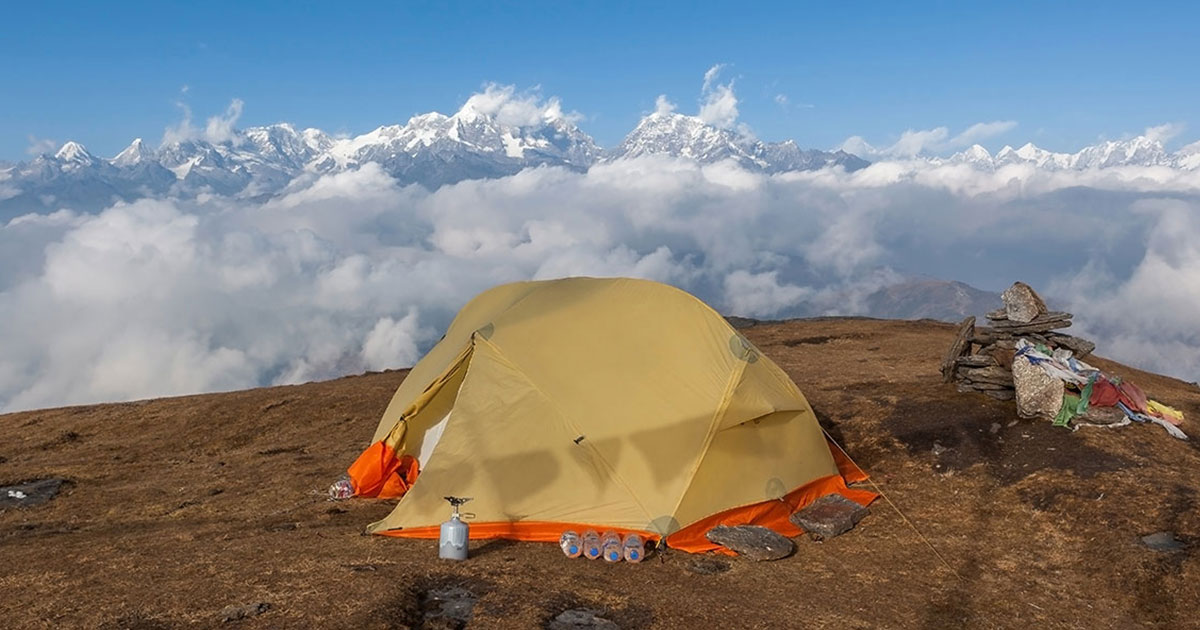
For trekking to Pikey Peak, you will need need to get three permits as you will traverse across two protected areas in the region. This trekking journey has often been considered a permit-free Himalayan trek; however, that is not true. You will need to get these mandatory permits for this trekking adventure.
Required Permits
- Sagarmatha National Park Entry Permit
- Gaurisankhar Conservation Area Permit
- Local Area Permit
The Sagarmatha National Park Entry Permit and Gaurisankhar Conservation Area Permit will give you access to enter the protected areas in the region, and both of these permits cost approximately around US$ 30. As for the Local Area Permit, which allows you to enter conserved settlements enroute, you can get this permit at US$ 20.
Note: Green Society Adventure will handle all your permit needs and collect these permits for you from the designated office.
Food and Accomodation
This incredible trekking adventure takes place in one of the most popular trekking destinations in the country, the Everest region. So, you can expect a good level of food and accommodation facilities in this trekking route even if it has been just recently established. For food, the teahouses that are run by the natives of the region mostly offer traditional delicacies including some other Asian country dishes and western menus.
For breakfast, you can enjoy light and healthy options like Tibetan Bread, Tsampa Porridge, Muesli, Oats, Pancake, Eggs, Toast, Egg, Juice, Tea/Coffee, etc. As for dinner and lunch, the menu is quite extensive and includes several popular items like Momo, Chowmein, Dal Bhat, Thukpa, Sherpa Stew, Dhindo, Aloo Tama, Pizza, Burger, Pasta, Steak, Salad, etc.
Accommodation
In a standard trekking package on this route, you will spend about 6 nights on the mountain. If your adventure package handles your overall itinerary plans during your stay in Nepal, you will also spend a few days at a hotel in Kathmandu. During your stay at the teahouses that are mostly run by the natives, you will stay in a warm and comfortable that has two to three beds.
The bathroom facilities at the teahouse are mostly on a shared basis. Some teahouses have bathrooms inside; meanwhile, others have them out in the yard. The communal areas at the teahouses do have heaters but the rooms of standard packages are not heated.
You may also like:
Packing for Pikey Peak Trek
The Pikey Peak Trek takes place in the Himalayan region, which is a remote and isolated part of the country. During this trekking journey, you will also traverse across diverse climatic zones. So, it is important to pack the right layer, gear, and products to accommodate your needs during your exploration on the mountain.
Also, don’t forget to pack your favorite energy bars and snacks during your trek. There are a limited number of teahouses and shops along the trekking route, so you may not find your favorite product at such remote altitudes. Similarly, if you are planning to finish your shopping in Nepal, do it in the city areas; the cost can be high as you climb to high altitudes for the same products.
Packing List for Trek
- Sun hat
- Warm woolen hat
- T-shirt and shirt
- Hoodie
- Fleece jacket
- Waterproof/windproof jacket
- Thermal wears
- Down jacket
- Comfortable cotton pant
- Hiking shorts
- Waterproof/windproof trousers
- Sunglasses
- Trekking pole
- Sleeping bag
- Powerbank
- Headlamp
- Map and GPS
- Toothbrush and toothpaste
- Small mirror
- Nail clipper, razor, and comb
- Perfume or body spray
- Hand sanitizer
- Small first aid kit
